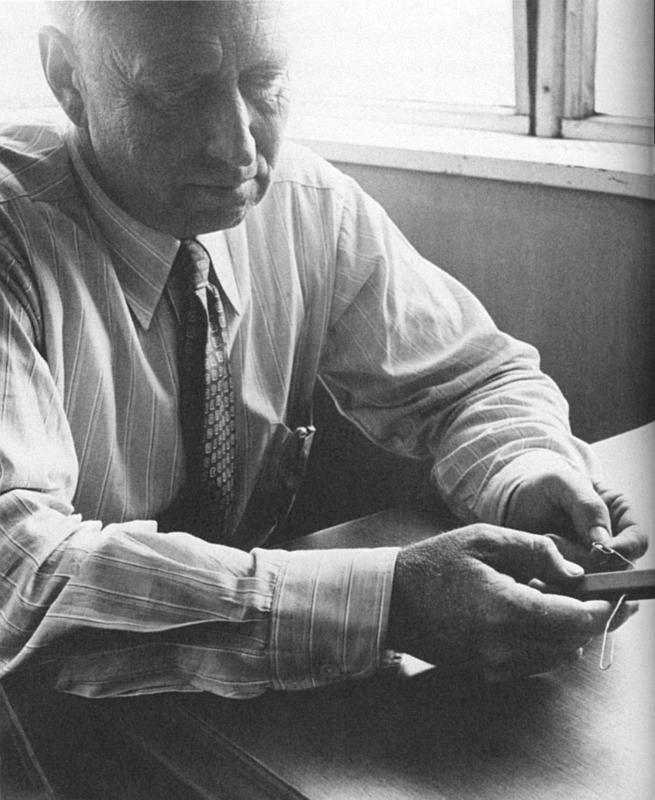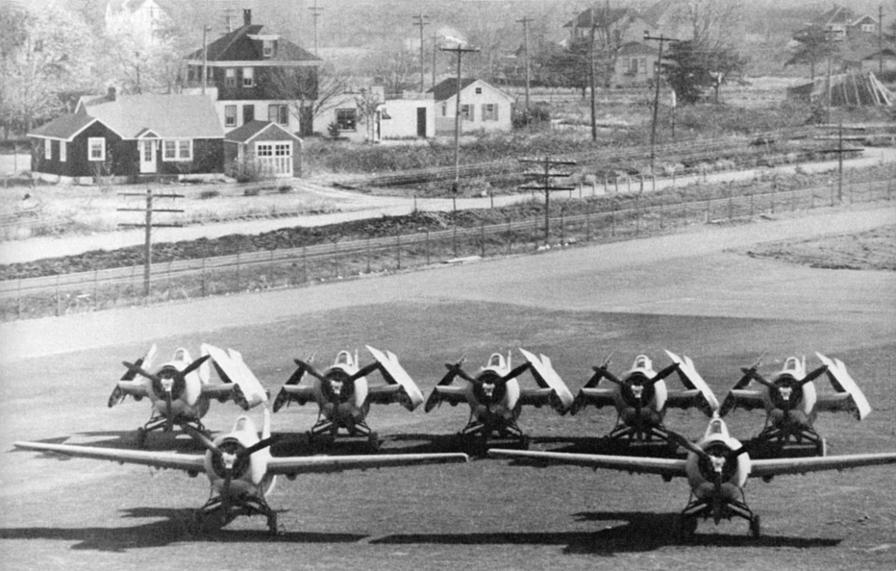Grumman and Paperclips (The Sto-Wing and the Lunar Module)
An early model of the Apollo Lunar Module used paperclips for legs:
Click image for more information about this picture; opens in a new window.
Picture by heroicrelics.org.
This reminded me of a story from Richard Thruelsen's The Grumman Story.
Shortly before World War II, the US Navy was looking for a way to put more planes on a carrier -- at this time, the planes were still fixed-wing. They had tried to put hinges in the wing to fold the tips up, but that increased the height of the plane and decreased the "structural soundness of the extended wing". A better way would be to do what birds do "twist the wings to a vertical position and then fold them back against the body." The problem was that no one could come up with a workable solution.
Quoting from the book:
Roy Grumman, the intuitive engineer, found the steps. He saw, in all probability, that it revolved around a pivot. So he took a soap eraser, such as those used in drafting, and use that to represent the fuselage of the plane. Then he took two paper clips for the wings and bent out the short end of each of the clips so that it was normal or perpendicular to the body of the clip. Then he began sticking the short ends into the eraser until he found the proper angle and position at which the clip, when twisted to a vertical position, would also fold back snugly against the eraser. ...
The principle upon which the Grumman folding wing depended was what engineers call a skewed axis. This axis, in essence, was a pivot set in the wing root that projected outward and backward at a certain angle into the movable portion of the wing. It is difficult to describe, but any reader with an eraser, paperclips, ingenuity, and patience can duplicate the mechanism. ...
Once the principle of the Sto-Wing (as it came to be called) was established, all that remained was some hard, nutcracking engineering to make the mechanism strong and fail-safe.
This design was incorporated into the Wildcat; with this folding wing, the 38-foot wingspan was reduced to only 14' 4", allowing nearly twice as many planes to be stored onboard the carrier. This wing design was also used by other WWII-era aircraft, including the Hellcat and Avenger. As of the book's publishing in 1976, the Grumman folding wing was still in use on Navy carriers.
Click image for a 1136x1388 pixel version of this image in a new window.
Roy Grumman demonstrating the Sto-Wing concept with an eraser and some
paperclips.
From p. 126 of The Grumman Story
Scan by heroicrelics.
Grumman Corporation created a small award containing an eraser and paperclips. The text of this award reads
Leroy R. Grumman
In recognition
of this ability to
develop new ideas
which contributed
to the advancement
of Aviation.Officers and Directors
Grumman Aircraft Engineering Corporation
Click image for a 730x1192 pixel version of this image in a new window.
From p. 126 of The Grumman Story
Scan by heroicrelics.
Click image for a 1865x1188 pixel version of this image in a new window.
Wildcats featuring the Sto-Wing.
From p. 127 of The Grumman Story
Scan by heroicrelics.




